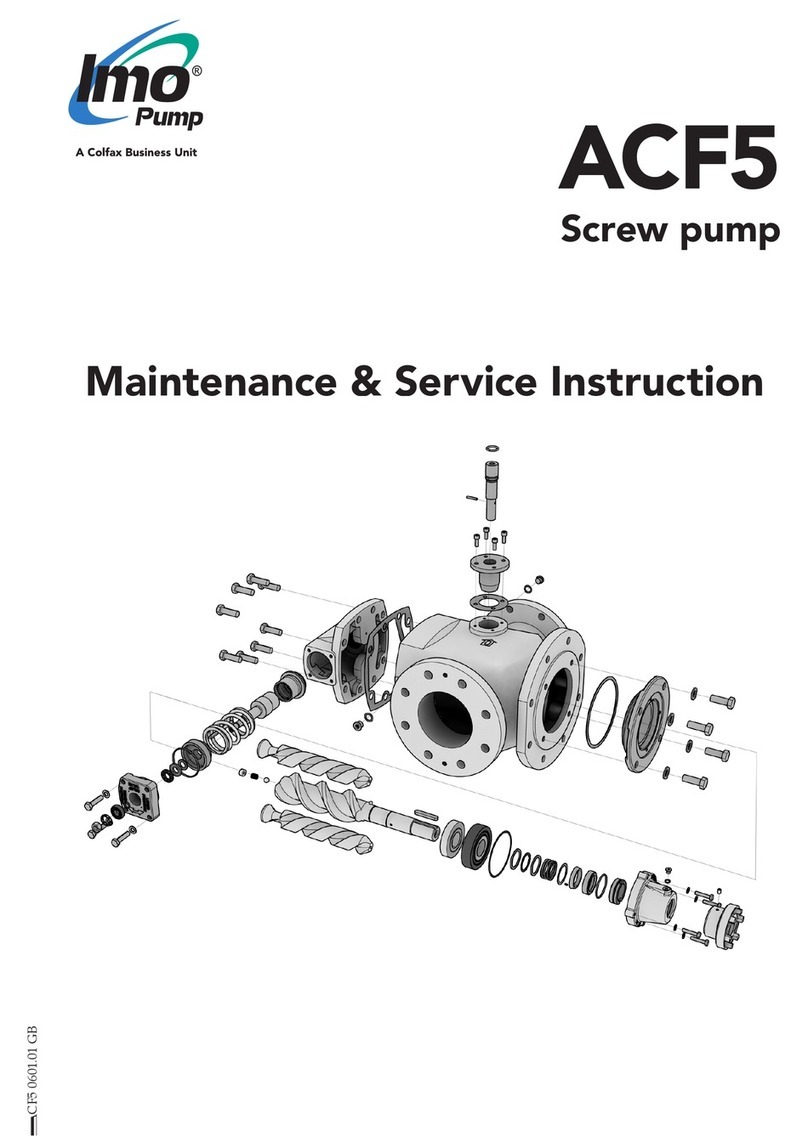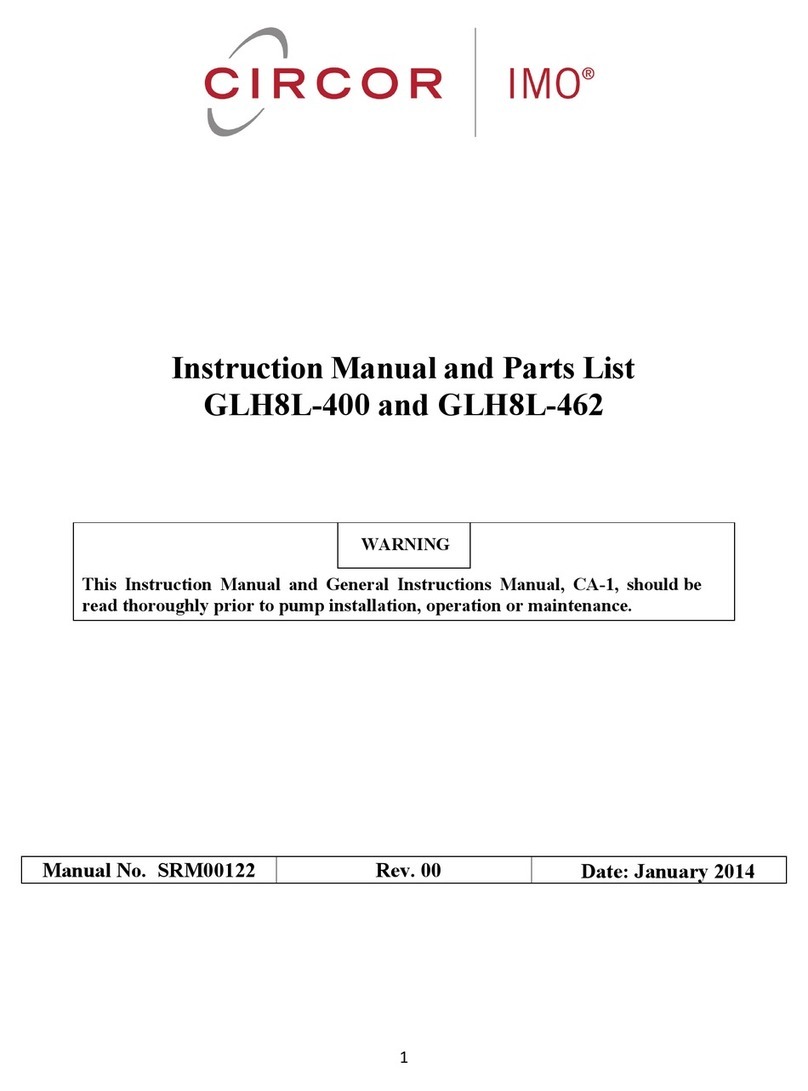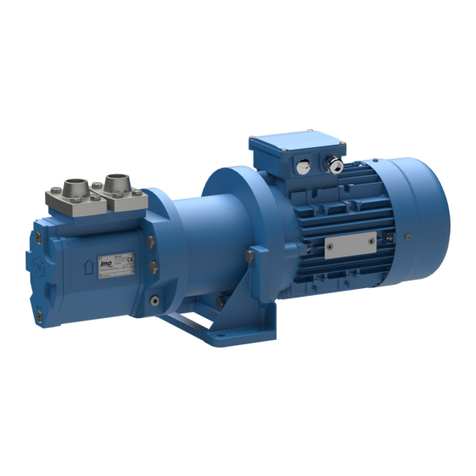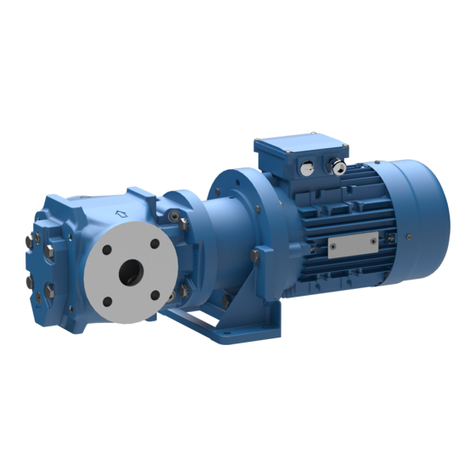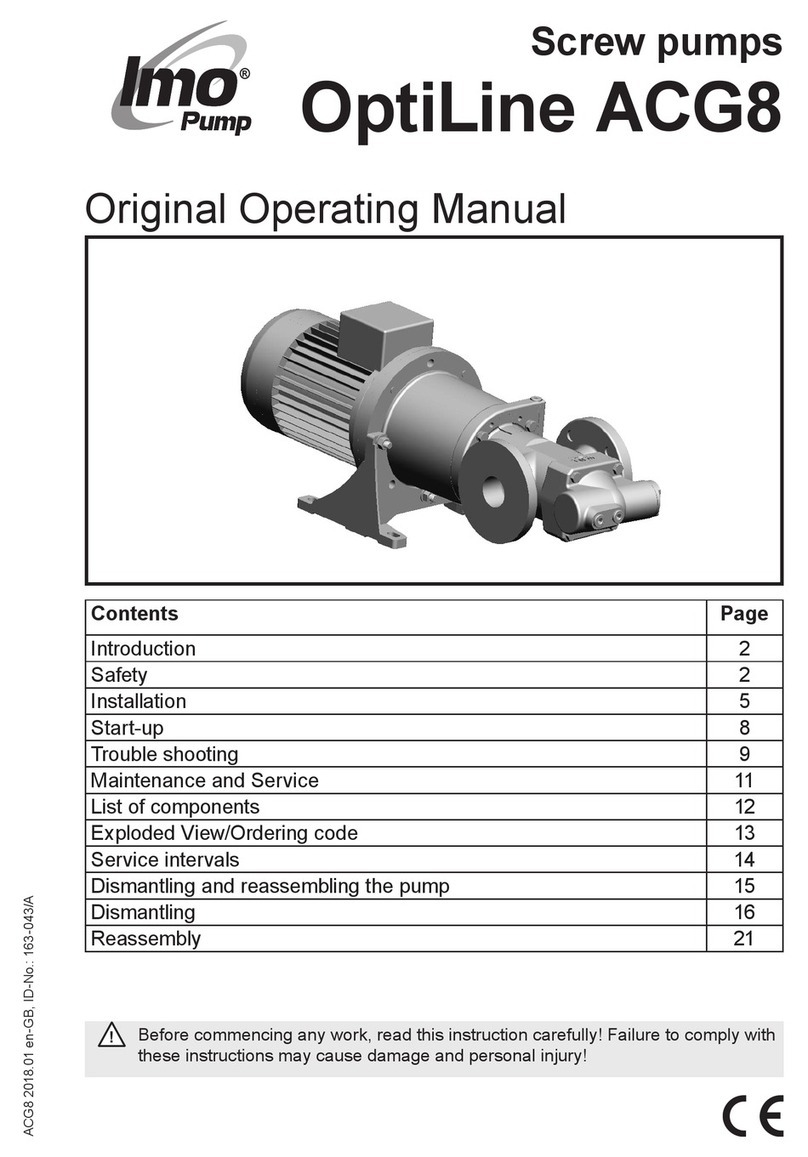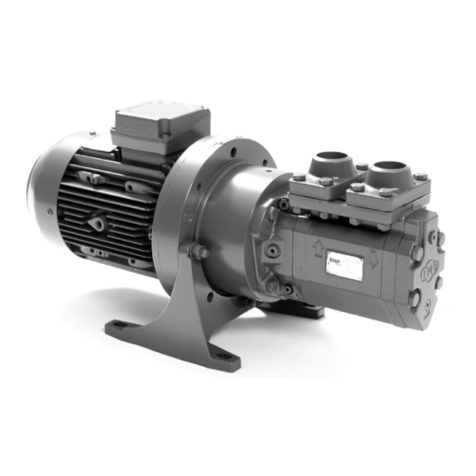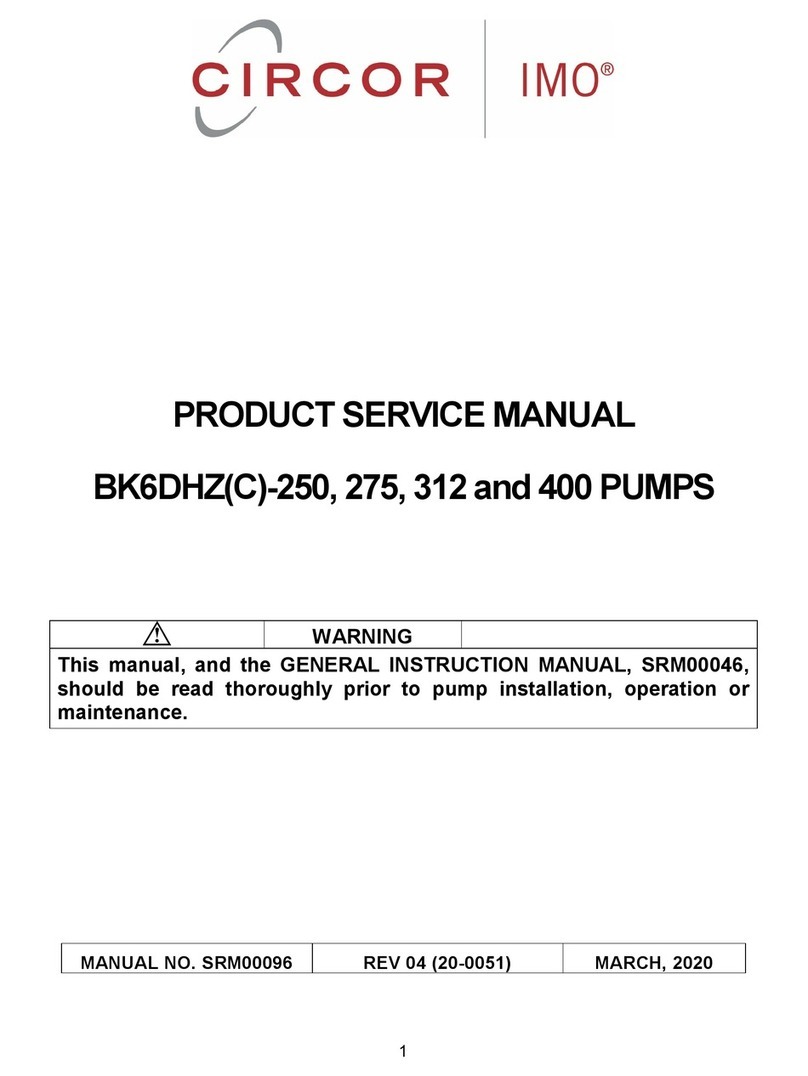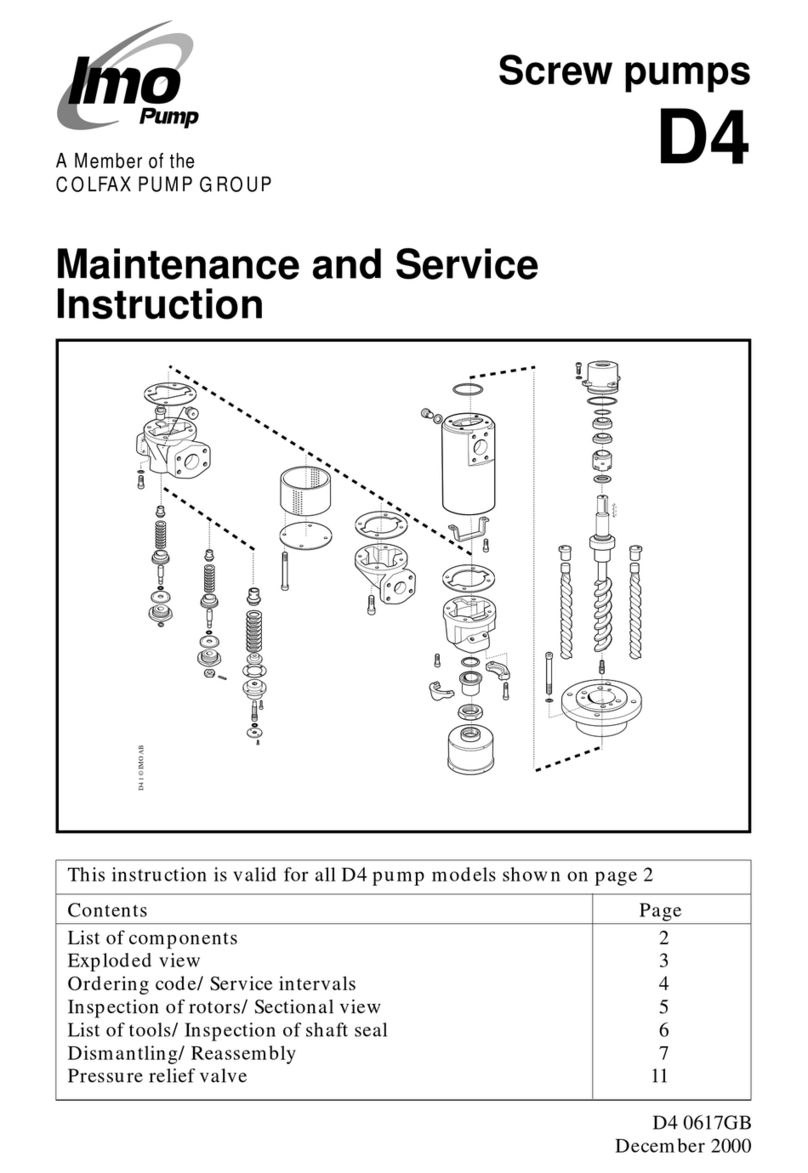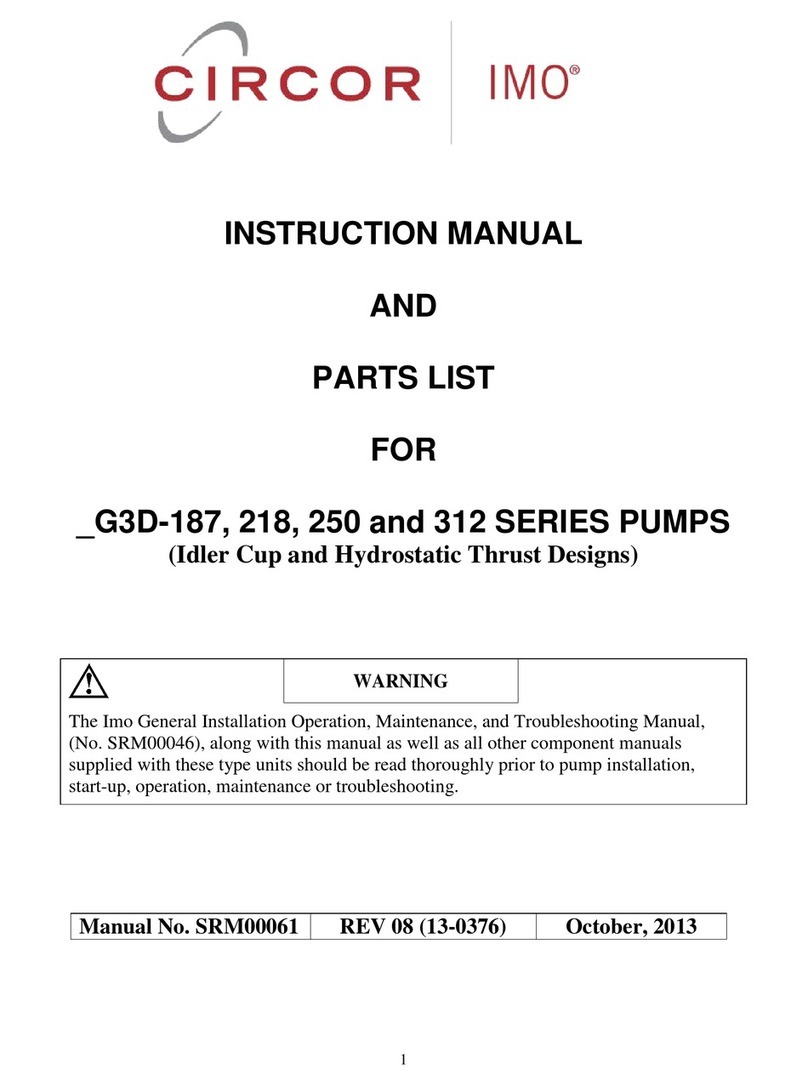
3www.imo.se
ACF/UCF5 2019.12 en-GB, ID-No.: 163-044/B
• Keep this manual and all other applicable documents complete, legible and accessible to personnel at all
times.
• Refrain from any procedures and actions that would pose a risk to personnel or third parties.
• In the event of any safety-relevant malfunctions, shut down the pump immediately and have the malfunc-
tion corrected by the personnel responsible.
• In addition to the entire documentation for the product, comply with statutory or other safety and accident-
prevention regulations and the applicable standards and guidelines in the country where the system is oper-
ated.
Obligations of the operating company
Safety-conscious operation
• Ensure that the following safety aspects are observed and monitored:
– Intended use
– Statutory or other safety and accident-prevention regulations
– Safety regulations governing the handling of hazardous substances
– Applicable standards and guidelines in the country where the pump is operated
• Make personal protective equipment available.
Qualied personnel
• Make sure all personnel tasked with work on the pump have read and understood this manual and all other
applicable documents, especially the safety, maintenance and repair information, before they start any work.
• Organize responsibilities, areas of competence and the supervision of personnel.
• Ensure that all work is carried out by specialist technicians only:
– Fitting, repair and maintenance work
– Work on the electrical system
• Make sure that trainee personnel only work on the pump under the supervision of specialist technicians.
Safety equipment
• Provide the following safety equipment and verify its functionality:
– For hot, cold and moving parts: on-site safety guards for the pump
– For possible electrostatic charges: provide the necessary grounding
– If there is no pressure relief valve in the pump: Provide an appropriate safety valve on the pressure
side between the pump and the rst shut-off device
Warranty
• Obtain the manufacturer’s approval prior to carrying out any modications, repairs or alterations during the
warranty period.
• Only use genuine parts or parts that have been approved by the manufacturer.
Drive system
For pumps delivered without a drive system, comply with the following requirements for the drive system:
• When using three-phase asynchronous motors, observe IEC 60034-30-1.
• Power of the drive according to EN ISO 5199 is recommended (EN ISO 5199 also applicable for drives of
screw pumps).
• For stub shaft coupled pumps (LPD and ACD) connect motor and stub shaft directly.
• For other series use elastic coupling according to DIN 740-2.
• Use coupling guard with the following requirements:
– Fastening elements must be connected to the pump unit in undetachable design (cannot get lost).
– Safety distances against the reaching of hazardous areas according to EN ISO 13857 must be
complied with.
Obligations of the operating company
• All directions given on the pump must be followed (and kept legible), e.g. the arrow indicating the sense of
rotation and the markings for uid connections.
• Pump, coupling guard and components:
– Do not step on them or use as a climbing aid
– Do not use them to support boards, ramps or beams
– Do not use them as a xing point for winches or supports
– Do not use them for storing paper or similar materials
– Do not use hot pump or motor components as a heating point
– Do not de-ice using gas burners or similar tools
• Do not remove the safety guards for hot, cold or moving parts during operation.
• Use personal protective equipment whenever necessary.
• Only carry out work on the pump while it is not running.
• Isolate the motor from its supply voltage and secure it against being switched back on again when carrying
out any tting or maintenance work.
• Reinstall the safety equipment on the pump as required by regulations after any work on the pump.
